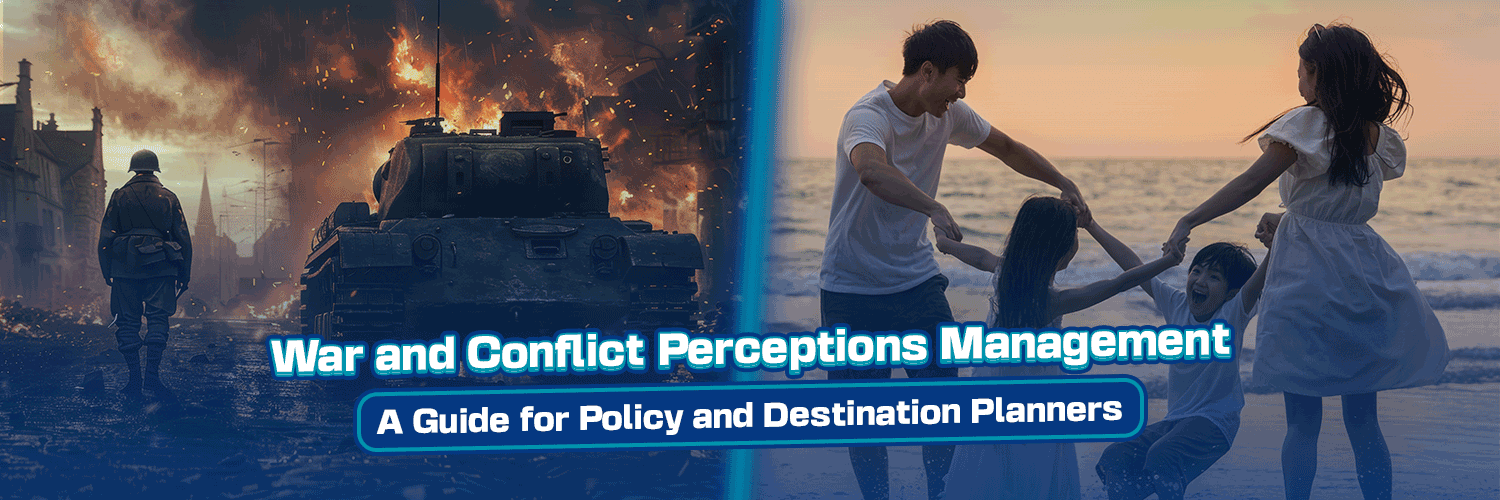How War and Conflict Change Perceptions: A Guide for Policy and Destination Planners
Changing Preferences for Safe and Secure Destinations
War and conflict have always played a pivotal role in shaping global travel patterns. Historical conflicts such as World War II, the Vietnam War, and ongoing conflicts in the Middle East have significantly influenced tourists' preferences for safe and secure destinations. During World War II, for instance, many traditional European tourist hotspots were abandoned in favor of less affected areas. Similarly, the Vietnam War redirected travelers to more peaceful Southeast Asian countries, altering the region's tourism landscape. Contemporary conflicts in the Middle East have similarly shifted tourist flows to safer destinations, creating new opportunities and challenges in the global tourism market.
Historical Shifts in Tourist Destinations During Wartime
The impact of war on tourism is profound. During major conflicts, tourists often seek out destinations perceived as safe, leading to significant shifts in global travel patterns. For example, during World War II, European tourism declined sharply, and alternative destinations in the Americas and the Pacific gained prominence. The Vietnam War saw a similar redirection, with tourists avoiding Southeast Asia and instead opting for more secure locations such as Australia and New Zealand. These shifts not only affect immediate tourism revenues but also have long-term implications for the development of tourism infrastructure and services in these safer regions.
Factors Influencing Safety Perceptions
Tourists' perceptions of safety are influenced by various factors, including government travel advisories, media coverage, and personal experiences. Government advisories can have a direct impact, as they are often seen as authoritative sources of information. Media coverage also plays a critical role, with sensational reporting potentially exaggerating risks and deterring travelers. Personal experiences and social networks further shape these perceptions, as travelers often rely on recommendations and shared experiences from friends and family. Over time, these factors collectively contribute to the reputation of a destination, influencing its attractiveness to potential tourists.
Case Studies of Destinations Gaining Popularity for Safety
Several destinations have successfully marketed themselves as safe havens during times of conflict elsewhere. Scandinavian countries, for example, have capitalized on their stable political environments to attract tourists from regions experiencing turmoil. New Zealand, renowned for its peaceful reputation, has seen increased tourist numbers during conflicts in other parts of the world. Parts of South America have similarly gained popularity by promoting their safety and security, resulting in significant boosts to their tourism industries. These examples highlight the potential for destinations to leverage their stability in attracting tourists seeking safety.
Economic Impact on Safe Destinations
The economic implications for destinations that gain popularity due to their perceived safety are substantial. Increased tourist numbers lead to higher revenues, job creation, and broader economic growth. However, these destinations also face challenges such as managing sudden influxes of tourists and ensuring that infrastructure and services can accommodate the increased demand. Balancing growth with sustainability becomes crucial, as destinations must invest in infrastructure improvements and maintain high standards of service without compromising their natural and cultural assets.
Future Trends in Safety and Tourism
Looking ahead, the trend of seeking safe and secure destinations is likely to continue evolving. Emerging global threats, such as terrorism and pandemics, will influence tourist behavior. Advancements in technology, including enhanced security measures and real-time safety updates, will play a significant role in ensuring tourist safety. International cooperation will also be vital in promoting and maintaining secure travel environments. Destinations currently perceived as unsafe may recover and rebrand themselves in a post-conflict era, with effective marketing and strategic investments in safety infrastructure.
Strategic Recommendations for Policy and Destination Planners
Proactive Communication: Destinations should actively communicate their safety measures and stable environments through various channels, including social media, travel advisories, and direct marketing campaigns. Transparency and consistent messaging are key to building trust and attracting tourists.
Collaborate with Media and Influencers: Partnering with media outlets and influencers can help shape positive perceptions. Accurate and balanced reporting, along with endorsements from trusted voices, can counteract negative stereotypes and highlight a destination's safety features.
Invest in Safety Infrastructure: Continuous investment in safety infrastructure, such as emergency services, surveillance, and health facilities, is essential. Demonstrating a commitment to safety not only attracts tourists but also reassures them during their stay.
Engage with Local Communities: Involving local communities in tourism development ensures that the benefits of increased tourism are widely distributed. This inclusive approach helps build a positive reputation and fosters sustainable tourism practices.
Monitor and Adapt: Regularly monitoring safety perceptions through surveys and feedback mechanisms allows destinations to adapt their strategies. Being responsive to tourists' concerns and expectations is crucial for maintaining a positive image.
By understanding and addressing the factors that influence tourists' perceptions of safety, destinations can effectively navigate the challenges posed by war and conflict. Strategic branding and messaging, coupled with investments in safety and sustainability, can position these destinations as attractive, secure options for global travelers.
